In the world of
If you’re struggling to keep your kids from getting bored with all their toys, open-ended toys are for you! They will help foster independent play and help kids develop focus, creativity, and critical thinking skills.
In this post, I’ll explain the benefits of open-ended toys and how they differ from other types of toys.
In this post:
- What are open-ended toys?
- Examples of Open-Ended Toys
- Benefits of Open-Ended Toys
- Open-Ended Toys vs. Overly Detailed or Battery-Powered Toys
- How to Pick Open-Ended Toys
- FAQs
We get commissions for purchases made through links in this post. As an Amazon Associate, we earn from qualifying purchases.
What are open-ended toys?
Open-ended toys are essentially “toys” that are not overly specific. If you gave the same toy to 10 kids, they could all use it in different ways.
They are versatile, adaptable, and, most importantly, grow with your child. A baby can grasp at blocks, and a five-year-old can build with the same set of blocks.
Unlike a toy with a single purpose, open-ended toys can be anything your child wants them to be.
A block can be a car, a piece of food, a building, or even a character in their play.
These toys act as a canvas for a child’s imagination, free from the rigid structure and specific outcomes dictated by many modern toys. They are the roots of imaginative play, allowing kids to interpret and use them in numerous ways.
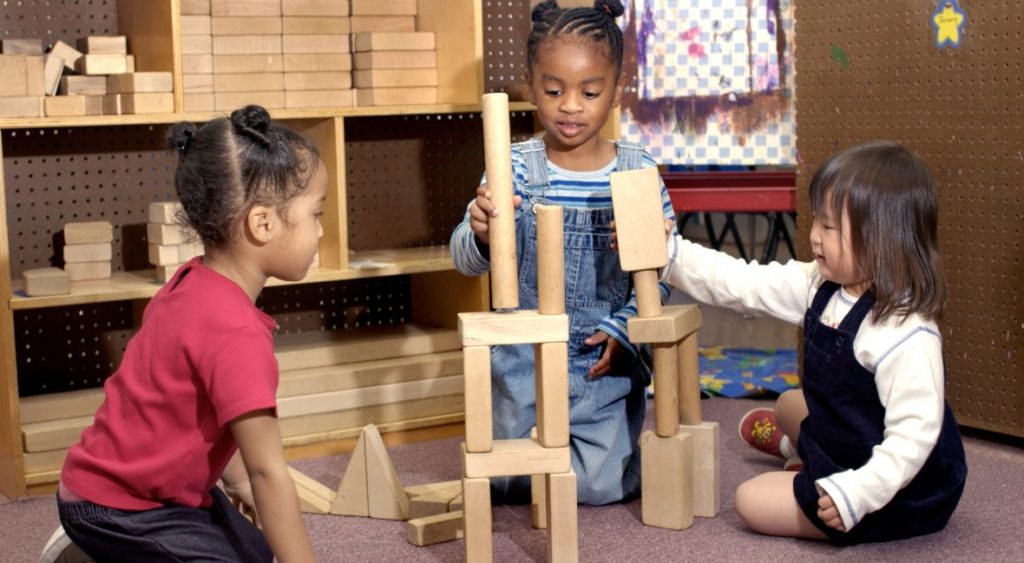
Examples of Open-Ended Toys
Examples of open-ended toys include:
- wooden blocks – check out all my favorite sets of blocks!
- Magnatiles
- fabric pieces
- cardboard boxes
- realistic toy animals – check out all my favorite toy animals!
- sticks
- rocks
- buckets
- blankets
- silk scarves
- rainbow stacker
- sand
- water
- wood rounds
- old clothes and hats for dress-up
- art supplies
- household objects: pots, pans, spoons, containers, kitchen utensils
- small loose parts: buttons, pompoms, bottle caps, beads, corks, pipe cleaners, math counters, marbles, dice, gems, cotton balls, washers, curtain rings, beans, etc.
- large loose parts: pallets, tires, stumps, wood scraps, planks, plastic gutters, wire spools, milk crates, tubes, etc.
Essentially, any child-safe item, or loose parts, can act as an open-ended toy!
- Check out my top 11 open-ended toys for toddlers!

Benefits of Open-Ended Toys
- Fosters Creativity and Imagination: With no set instructions or end goals, kids create their own narratives and functions for their toys, which ignites creativity and imagination.
- Encourages Independence: Kids make their own decisions during open-ended play, which builds decision-making skills and independence.
- Adaptable Learning: Open-ended toys naturally adapt to the child’s developmental stage, providing a long-term learning tool that evolves with your child’s growth. A child can build more and more complex block structures over time.
- Enhances Problem-Solving Skills: As kids manipulate and explore these toys, they learn about spatial relationships, cause and effect, and basic physics principles.
- Extended Play Duration: The absence of predetermined outcomes or rules opens up endless possibilities, keeping playtime fresh and engaging for extended periods of time. The more kids play, the more they build focus, problem-solving, creativity, cooperation, communication, determination, passion, curiosity, joy, love of discovery, and a deep understanding of the world.
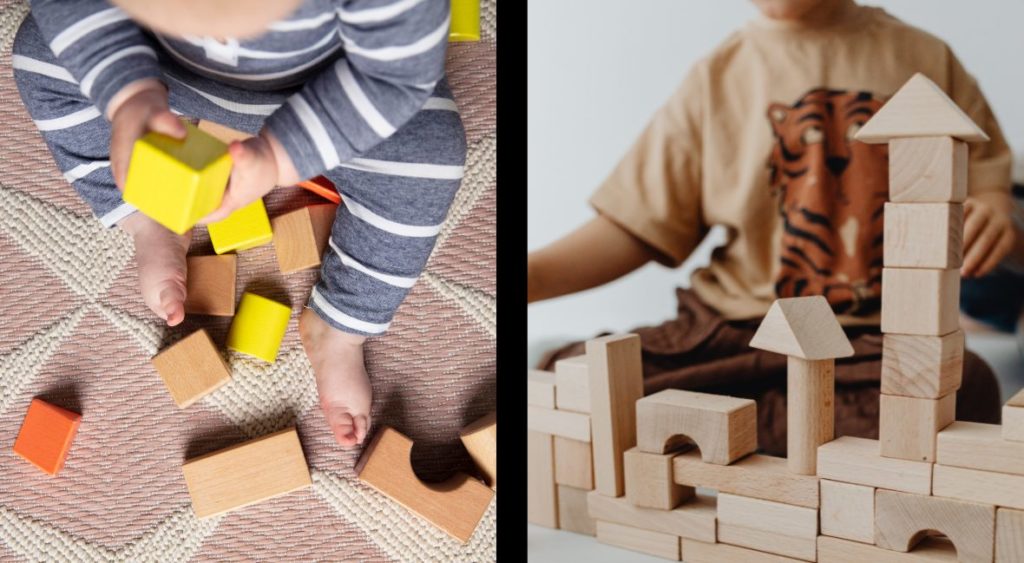
- Looking for more open-ended play ideas? Check out these 8 open-ended play activities using everyday items!
Open-Ended Toys vs. Overly Detailed or Battery-Powered Toys
Open-ended toys stand in contrast to overly detailed and battery-powered toys. While detailed, specific, and battery-powered toys may be cute, they’re actually very limiting when it comes to play.
These two types of toys offer fundamentally different play experiences and engage kids in markedly different ways. Understanding this contrast is key to recognizing the unique value of open-ended toys.
Differences Between Open-Ended Toys and Overly Detailed or Battery-Powered Toys
Here are some key differences:
Imagination vs. Prescription:
Open-ended toys serve as a blank slate for a child’s imagination. A simple wooden block can be a car, a piece of cake, a building, or a mountain, depending on the child’s momentary whim.
In contrast, overly detailed or battery-powered toys have a predefined purpose. A toy carwash with specific features and sounds can only be a carwash, often with a limited scope of interaction. For example, all kids can do is push the car through, which quickly becomes boring.
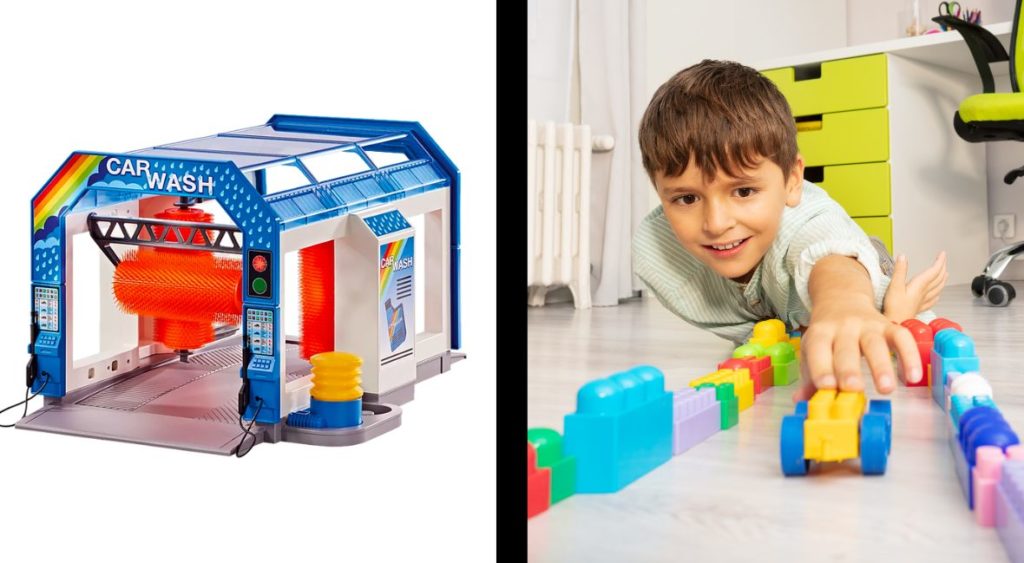
Active Engagement vs. Passive Consumption:
Open-ended toys require active engagement. Kids must use their creativity and problem-solving skills to decide how the toy is used, making the play more engaging and mentally stimulating. I like to say that play is 10% toy and 90% child.
On the other hand, battery-powered or highly specific toys often encourage passive consumption. A child may press a button and be entertained by lights and sounds, but this is a one-way interaction that doesn’t require much creative or critical thinking. Active toys make for passive kids.
Play vs. Entertainment:
While both types of toys can be entertaining, open-ended toys offer a broader range of play possibilities. They promote creativity, problem-solving, fine motor skills, and social skills when used in group play.
Overly detailed or battery-powered toys might target specific skills or knowledge areas (like learning numbers or letters), but they often don’t provide the same breadth of developmental benefits.
Longevity and Versatility vs. Limited Use:
Open-ended toys have a longer lifespan in a child’s playtime repertoire. As the child grows, their interests and abilities change, and the same set of wooden blocks can provide new and challenging play opportunities.
In contrast, toys with a very specific function or theme often lose their appeal once the child has explored the limited set of interactions they offer.
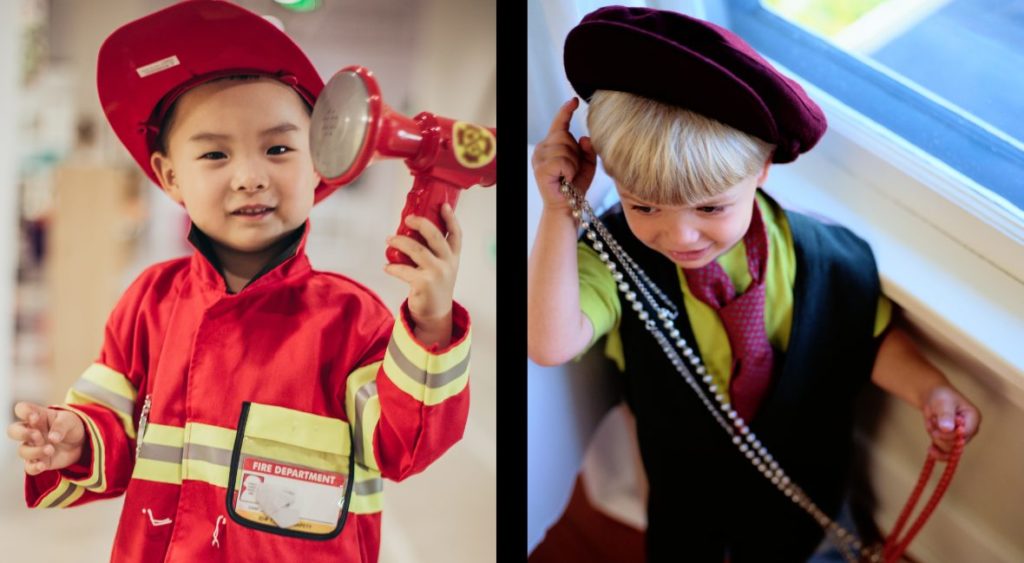
Why Overly Detailed or Battery-Powered Toys May Be Less Engaging
Overly detailed or battery-powered toys often dictate the play, leaving little room for the child to make it their own. This can lead to several issues:
- Reduced Creativity: When a toy has a specific function or outcome, it limits the scope of a child’s imagination, as they’re more likely to use the toy in the intended, predictable way.
- Shorter Attention Span: These toys might initially capture a child’s attention with lights and sounds, but the novelty can wear off quickly. Once the child has explored the limited set of interactions, the toy may become boring.
- Dependency on External Stimulation: Over time, kids may become accustomed to the external stimulation provided by battery-powered toys and lose the ability to entertain themselves, potentially impacting their ability to play independently and creatively.
In contrast, open-ended toys put the child in charge of play and offer a canvas as vast as the child’s imagination. This makes playtime more engaging and enriching and contributes positively to the child’s overall development.
How to Pick Open-Ended Toys
Here are four questions to ask to help guide you when selecting toys:
- Can this toy be played with in more than one way?
- Can this toy grow with my child?
- Can the toy be integrated with other toys or materials to create something new?
- Is the primary purpose of the toy to entertain (with lights, sounds, etc.), or does it encourage my child to direct the play themselves?
Answering yes to all these questions means that you’ve found an open-ended toy!
FAQs
1. Are open-ended toys suitable for all ages?
Absolutely! Open-ended toys are adaptable to various developmental stages, making them suitable for all ages. Kids can use them in new and interesting ways as their skill level grows and their interests change.
You should make sure to pick open-ended play items that are safe for your child’s age and stage. Rocks, for example, are great open-ended toys for all ages, but babies need rocks that are large enough not to be a choking hazard.
2. Do you need lots of money to provide kids with open-ended toys?
No, not at all!
Don’t feel like you need to rush out and create an Instagram-worthy playroom by buying hundreds of dollars of rainbow wooden toys.
One of the beauties of open-ended toys is that they don’t have to be expensive, and you don’t need a vast assortment to provide a rich play experience.
In fact, many everyday items can be transformed into open-ended toys. There is even a British Nursey that reported excellent results after doing away with all toys in favor of everyday items!
Here are a few examples of everyday items as “toys:”
- Cardboard Boxes: These can become anything from a spaceship to a shop, a car, or a fort, sparking imaginative play and creativity. Or they can just be a box in which toddlers put things in and out. Either way, they encourage play.
- Kitchen Utensils: Wooden spoons, pots, pans, and containers can be used in pretend play, as drumsets, or even as building materials.
- Natural Materials: Items like rocks, sticks, pine cones, and leaves can be used to create art, build structures, or serve as props in a storytelling game.
- Old Clothes or Fabric: These can be used for dress-up, setting up a play or puppet show, or as materials in a crafting project.
- Recyclables: Toilet paper rolls, plastic bottles, and egg cartons can be used in art projects, as building blocks, or as tools in imaginative play.
The key is not the item’s financial value but its value to play and development. It’s about seeing the potential in everyday objects and allowing your child’s creativity to bring that potential to life.
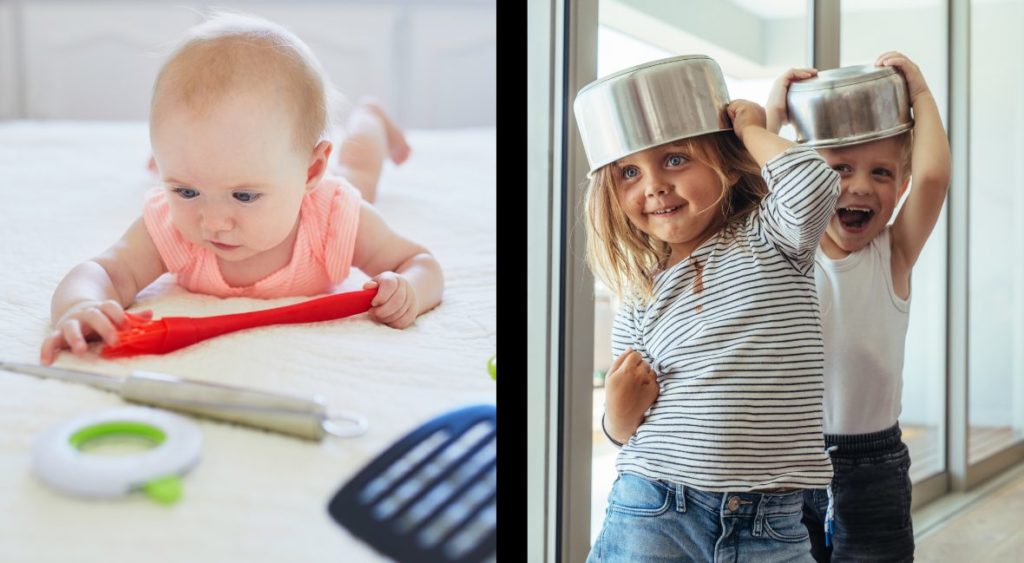
3. How can I encourage my child to engage more with open-ended toys?
Time, time, and more time!
Plan lots of unstructured time into every day! It will take some practice for your child to build their play muscles if they’re used to being entertained by you or flashy toys.
You can encourage them to explore various items by pulling things off the shelf into the middle of the play space. For example, you might spark your child’s imagination or interest by pulling out some wooden blocks and setting up a few with toy animals.
Keep it simple and avoid stepping in with lots of your own play ideas. We want kids to learn to direct their own time and play, which doesn’t happen if we rescue them from boredom.
Looking to foster independent play like a pro? Take my course!
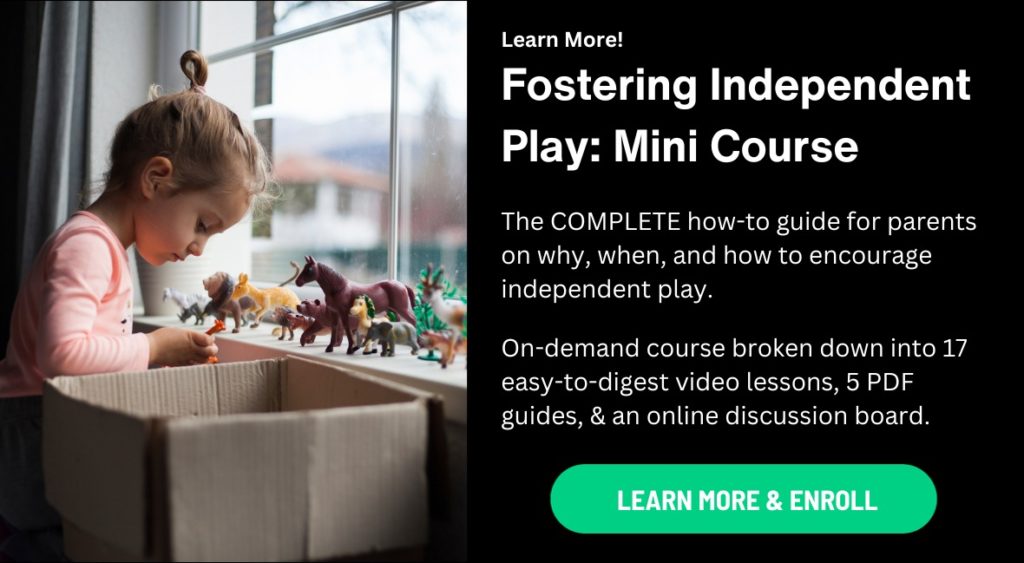
Final Thoughts
Open-ended toys are not just toys. They’re tools for deep and engaged play. They offer a world of possibilities for your child, encouraging them to think, explore, and grow independently.
A shift to open-ended toys can change the way your kids play! It might take some time, but it is well worth the learning period.
What are your favorite open-ended toys?


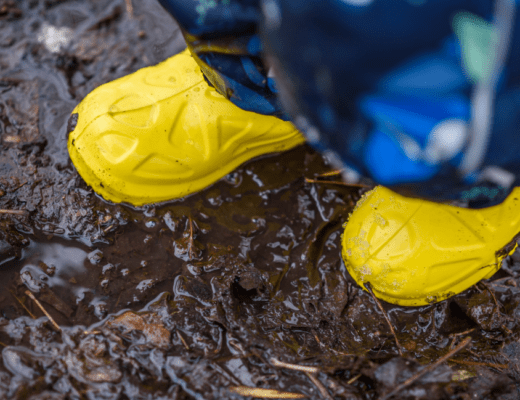
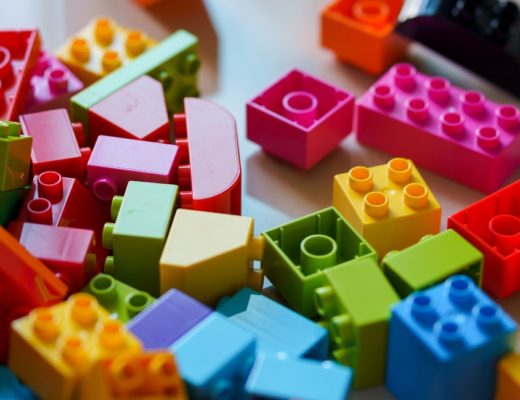

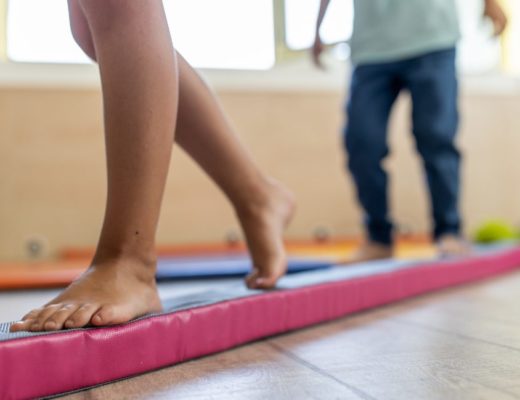
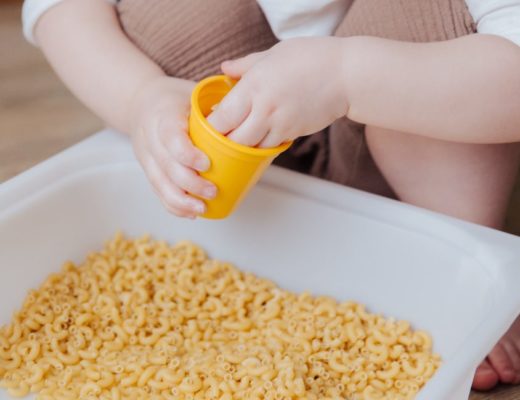
No Comments